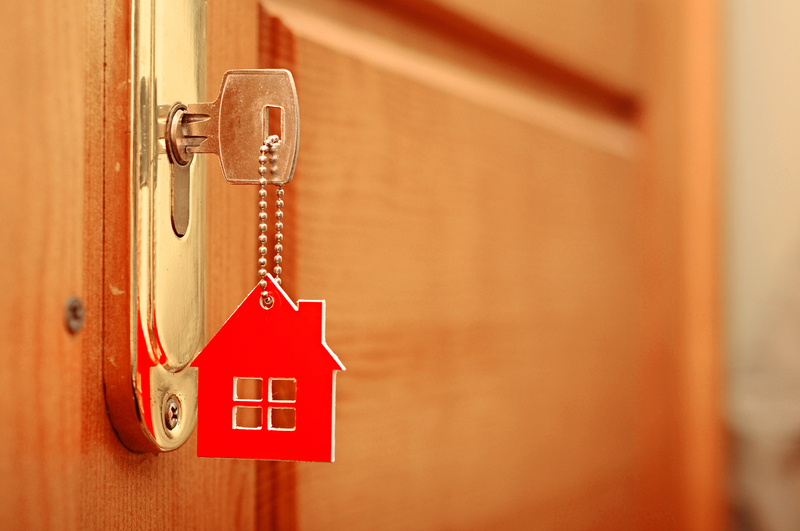Top Mistakes to Avoid When Packing for a House Move
Planning a successful move to a new home is no simple task, and packing is often the biggest challenge. Whether you're moving across town or to a different state, avoiding critical packing mistakes can save you time, money, and unnecessary stress. This article will highlight the top mistakes to avoid when packing for a house move and provide helpful tips to make your relocation efficient and stress-free.

Why Is Proper Packing Essential for a Smooth Move?
Before diving into the common packing errors, it's important to understand why efficient packing for a house move matters. Poorly packed belongings can lead to damage, loss, increased costs, and chaotic unpacking at your new home. That's why steering clear of frequent missteps can make all the difference between a difficult move and a streamlined transition.
Common Mistakes to Avoid When Packing for a House Relocation
1. Procrastinating the Packing Process
One of the most frequent mistakes when packing for a move is waiting until the last minute. It's easy to underestimate the time needed to sort, wrap, and box up your possessions. Rushing increases the risk of breakage, forgotten items, and overwhelming stress right before moving day.
- Tip: Start early by creating a realistic packing schedule several weeks in advance, tackling one room at a time.
2. Skipping Decluttering Before Packing
Packing without first decluttering is a costly blunder. Why pay to move items you don't need or want? Not decluttering leads to more boxes, higher moving expenses, and unnecessary chaos in your new home.
- Go through your belongings and sort items into categories: keep, donate, sell, and discard.
- Organize a garage sale or donate usable goods before you begin packing.
3. Using the Wrong Packing Materials
Choosing inadequate or poor-quality packing supplies can spell disaster. Flimsy boxes, weak tape, and insufficient padding won't protect your valuables in transit.
- Invest in sturdy boxes, bubble wrap, and packing paper for fragile items.
- Consider specialty wardrobe or dish boxes for added protection.
4. Overstuffing or Understuffing Moving Boxes
Overfilling boxes makes them heavy and increases the risk of breakage or injury. Underfilling boxes leaves too much empty space, causing contents to shift and break during transit.
- Pack boxes tightly, but avoid exceeding a safe weight limit--generally about 40-50 pounds per box.
- Use packing paper or towels to fill in gaps and cushion delicate items.
5. Failing to Label Boxes Properly
If you don't label your boxes clearly, unpacking in your new home will be a nightmare. This is especially critical for items you'll need immediately after your move.
- Write the room name and a brief list of contents on each box.
- Mark boxes containing fragile items with large, bold "FRAGILE" text.
6. Ignoring the Importance of an Essentials Box
A key packing mistake is neglecting to set aside an "essentials" box or bag. This should contain everything you need for your first 24-48 hours in your new home.
- Pack toiletries, medications, a change of clothes, important documents, chargers, snacks, and basic cleaning products.
- Keep this box with you in the car if possible for easy access.
7. Forgetting to Protect Fragile Items
One of the biggest packing for a house move mistakes is not giving special attention to fragile items. Skimping on padding or simply tossing breakables in boxes invites disaster.
- Wrap each fragile item individually with bubble wrap or paper.
- Double-box extremely valuable or breakable items, and fill all voids.
8. Failing to Disassemble Large Furniture
Trying to move bulky or oddly shaped furniture as-is can lead to damage and logistical nightmares. Furniture is much easier and safer to move when broken down into manageable parts.
- Disassemble beds, tables, and shelving units ahead of time.
- Collect screws and small parts in labeled bags attached to the furniture.
9. Neglecting to Secure Liquids and Hazardous Materials
Packing liquids or hazardous materials (like cleaning agents, paint, or propane tanks) incorrectly can result in messy spills or dangerous reactions in the moving truck.
- Seal liquids tightly and place them in waterproof bins or bags.
- Dispose of hazardous materials according to local regulations--most movers won't transport them.
10. Not Taking Inventory of Packed Boxes
Failing to track what's in your boxes makes it much harder to locate items later and creates confusion during the move.
- Keep a written or digital inventory, listing the contents of each box and its destination room.
What Else Should You Avoid When Preparing for a Move?
Overestimating Your Packing Skills
Many people believe they can handle all packing themselves, but for certain items--like valuable artwork, electronics, or pianos--professional packing services may be the wisest choice to prevent costly damages.
Packing Prohibited Items
Don't make the mistake of boxing up items moving companies won't transport. These often include perishable foods, pets, firearms, plants, and flammable materials. Check your mover's guidelines in advance.
Forgetting to Notify Important Parties
Amid the rush, it's easy to forget to update your address with banks, utilities, and subscriptions. Failing to do so can disrupt services or result in lost mail. Notify necessary parties early to ensure a smooth transition.
Poor Planning for Weather Conditions
Don't underestimate the impact of the weather on your moving day. Packing for a house move during rain, heat, or snow requires extra materials, careful loading, and flexible scheduling.
Not Labeling Cords and Electronics
Simply unplugging and tossing cables into a box will frustrate you when setting up at your new place. Clearly label each cord and take photos of how devices are connected for quick reassembly.
Leaving Drawers and Cabinets Full
It may seem easier to leave clothing or small items in drawers, but this approach adds weight and risks damaging furniture during transport. Always empty drawers and pack items separately.
How to Pack Like a Pro When Moving House
Plan and Organize Every Step
The best way to avoid mistakes when packing for a move is to create an action plan:
- Outline a timeline: Assign specific tasks to each week leading up to your move.
- Gather all necessary supplies before starting.
- Enlist help from friends, family, or professional movers if needed.
Use Quality Materials and Appropriate Techniques
- Double-tape box bottoms for strength.
- Group similar items together for easier unpacking.
- Safe, efficient stacking: Heavier items on the bottom, lighter ones on top.
Secure Valuables and Important Documents
Jewelry, heirlooms, and personal documents should travel with you, not on the moving truck. Use a locked bag or box for such items and clearly label it as "Do Not Move" for your movers.
Communicate Clearly with Movers
- Hire reputable, insured professionals with good reviews.
- Provide them with special instructions for fragile or high-value items.

Frequently Asked Questions About Packing for a House Move
What is the biggest mistake people make when packing?
The number one mistake is leaving packing until the last minute, which leads to disorganization, forgotten items, and increased chances of damage. Start early and stick to your schedule.
How can I reduce stress on moving day?
Prepare a moving day essentials box, label everything clearly, and ensure you have backup plans for contingencies such as weather or vehicle delays.
Should I use professional packers?
If you have limited time, a large home, or valuable items, hiring pros can minimize mistakes and give you peace of mind.
Which items should not be packed in moving boxes?
Do not pack perishable foods, flammable objects, liquids that could leak, critical documents, and valuables. Always check your mover's list of non-allowable items.
Conclusion: Ensuring Your Move Goes Smoothly
Packing for a house move is a significant undertaking that hinges on organization, preparation, and vigilance. By avoiding common packing mistakes like procrastination, poor labeling, and using improper materials, you can safeguard your possessions and ensure a smooth transition into your new home.
Start planning early, stay organized, invest in good packing supplies, and don't be afraid to seek professional help when needed. With careful attention to detail and by steering clear of these top packing errors during your house move, your relocation experience can be efficient, cost-effective, and even enjoyable.
Remember: The right preparation makes all the difference between a stressful move and a seamless new beginning!



